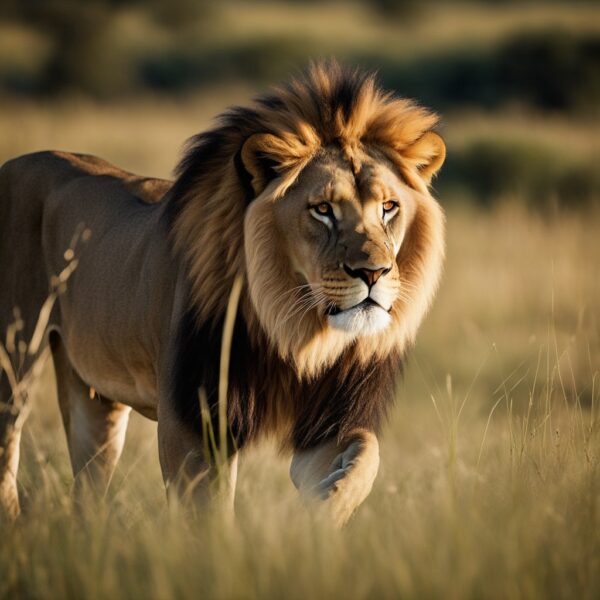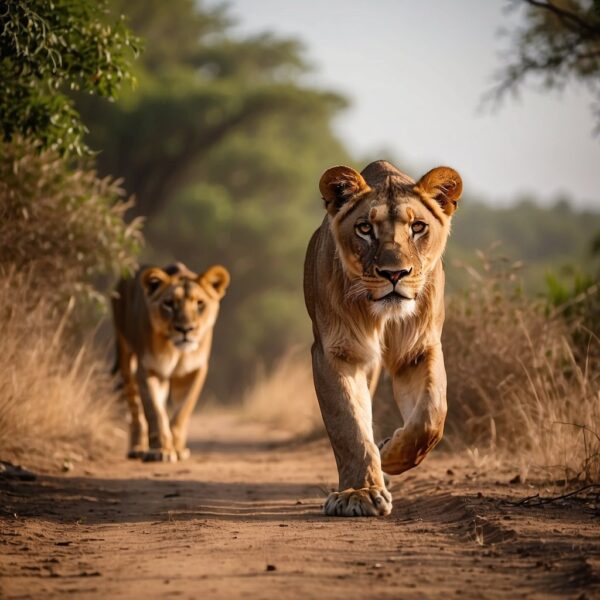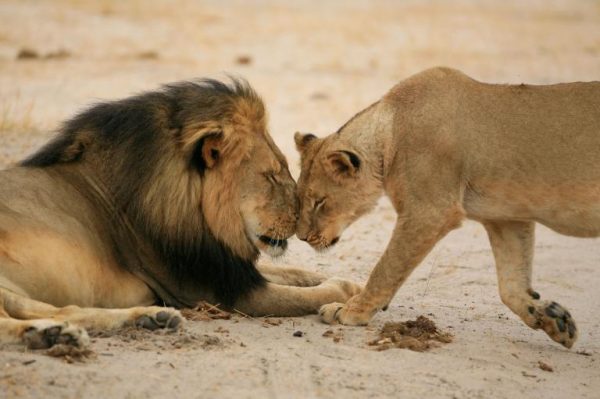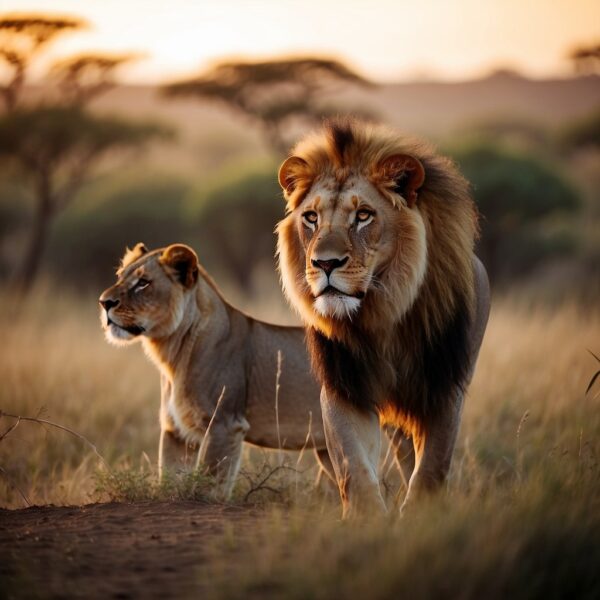
Unique Behaviors in Pride Dynamics
Male and female African lions social aging is different throughout their lives. African lions are iconic predators of the savanna, known for their majestic manes and powerful presence. These big cats live in social groups called prides, which typically consist of related females, their cubs, and a few adult males. Lions play a crucial role in their ecosystems as apex predators, helping to maintain balance among prey populations.
The lion’s social structure is unique among big cats. Female lions form the core of the pride, working together to hunt and raise cubs. Male lions, recognizable by their impressive manes, are responsible for defending the pride’s territory from rivals. This cooperative lifestyle allows lions to thrive in challenging environments and tackle large prey that would be difficult for a single individual to bring down.
Key Takeaways
- Lions live in social groups called prides, with females forming the core
- Male lions defend territory while females cooperate in hunting and cub-rearing
- The lion’s social structure helps them survive and thrive as apex predators

African Lions Male and Female Social Aging
Lions are social animals with complex relationships that change as they age. Male and female lions have different social patterns throughout their lives. These patterns affect how long they live and how well they survive in the wild.
Female lions build strong friendships with other females when they are young adults. These bonds help them defend their territory, hunt, and raise cubs together. As female lions get older, their connections to other females slowly weaken. But females who keep strong friendships tend to live longer.
Male lions have a different social path. They have fewer male friends in middle age, but make more as they get older. Their connections to female lions are strongest in middle age. For male lions, having more friends overall helps them live longer.

African Lion Social Aging Study
Scientists studied over 600 lions in the Serengeti for 30 years to learn about African lion social aging patterns. They watched which lions spent time together each day. This long-term study revealed how lion friendships change over time.
The way lions socialize can affect how diseases spread in wild populations. Older female lions might catch fewer illnesses as they spend less time with others. But older male lions could be at higher risk as they make new friends.
One famous lioness in the study lived to be 19 years old, which is very old for a lion. Her name was Lychee, and she was the oldest lion ever recorded in the Serengeti.
This research helps scientists understand how animals change their social habits as they age. It also shows how losing friends can affect a lion’s place in its social group. Future studies will look at how the loss of some lions impacts the rest of the group.
Scientists are now studying other wild animals to see if males and females in those species also have different social patterns as they age. This work could reveal new insights about animal societies.
Protecting African Lions By Understanding Their Social Aging throughout their Lives
Learning about lion social lives can help protect them. It shows how important friendships are for lions to survive and thrive in the wild. This knowledge can guide efforts to keep lion populations healthy in their natural habitats.

Common Questions About Lion Social Aging Behavior
How do male and female lions act differently in a pride?
Male and female lions have distinct roles in a pride. Female lions form the core of the group. They stay together for life and work as a team. Male lions join and leave prides. They guard the territory and were thought not to help with hunting or cub care. Recent studies reveal African male lions do hunt.
What jobs do male and female lions have in the wild?
Female lions do most of the hunting for the pride. They also raise the cubs together. Male lions protect the pride’s territory from other males. They patrol the area and fight off intruders. Males also father cubs with the females in their pride.
How does pride rank affect how young lions learn to socialize?
Cubs learn social skills from their mothers and other pride members. Female cubs usually stay in their birth pride. Male cubs leave when they reach 2-3 years old. The top females in the pride often have more cubs and pass on their high rank.
What happens to female lions if new males take over a pride?
When new males take over a pride, they may kill young cubs. This makes the females ready to mate again sooner. Adult females usually stay with the pride under the new males. Sometimes females leave if the takeover is violent.
Which lions do the hunting in a pride?
Female lions do about 85-90% of the hunting for a pride. They often hunt in groups of 2-3. This teamwork helps them catch larger prey. Male lions mainly hunt alone when needed. They join group hunts for big prey like buffalo.
How do male and female roles shape lion social groups?
Lion social structure revolves around female groups. Related females form the stable core of a pride. They hunt and raise cubs together. Male lions come and go. They compete to control prides. This system balances the needs of both sexes for food, protection, and breeding.